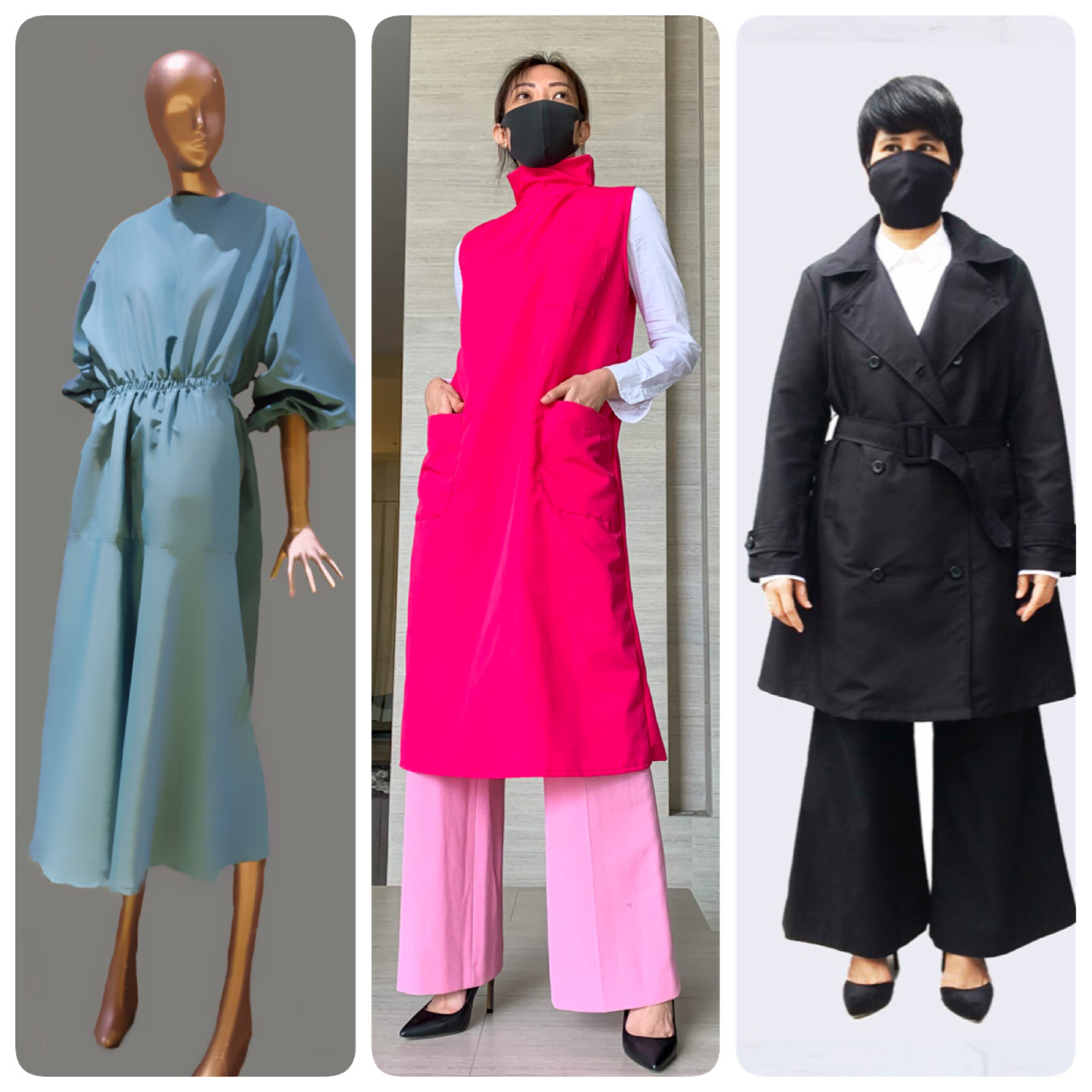With the advent of social distancing and the absence of big events, one of the many industries that’s taken a direct hit during this pandemic is fashion. How are some of the country’s leading designers managing to stay afloat? What measures have they taken to deal with the bleak situation? How are they retooling their businesses as the world slowly emerges from lockdown? Do they see PPE-inspired fashion as now part of the new normal?
By ALEX Y. VERGARA
When the government imposed an overnight ban on all forms of mass gatherings, including proms, debuts and weddings, in mid-March to control the spread of COVID-19, one of the many industries that suffered an immediate and direct hit was fashion. And in a society composed of people who love to dress up at the slightest excuse, the made-to-measure business continues to bleed in the absence of big events, even as the entire world starts to slowly reopen and ease into a new normal.
So, how are some of the country’s leading fashion designers managing to stay afloat? How are they responding to these unprecedented developments? What keeps them up at night as well as gives them reasons to hope?
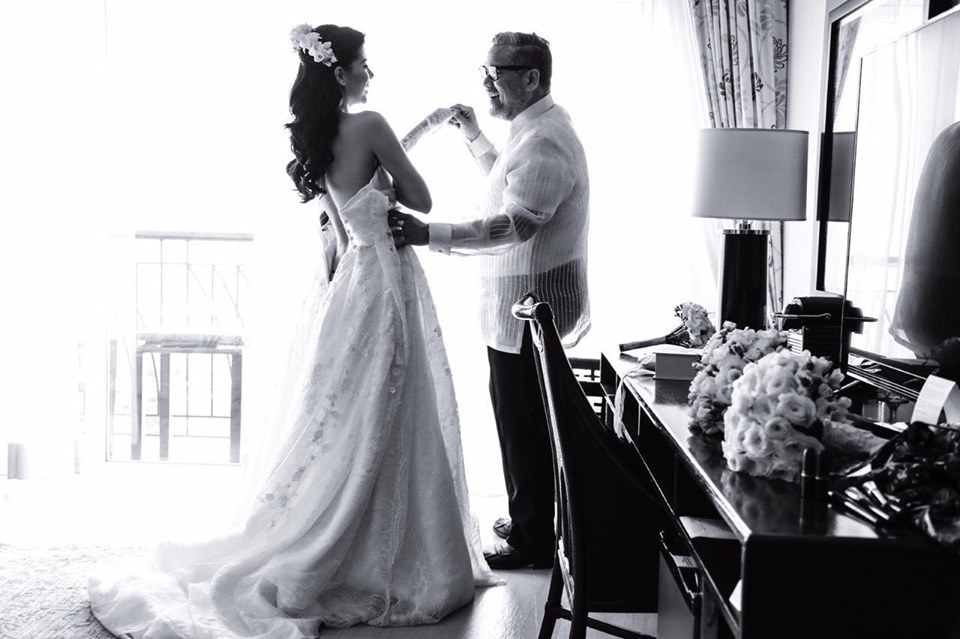
For starters, all of them have had to drastically reduce, even halt production and scale back plans in order to survive the immediate effects of the pandemic. At the same time, almost all of them are on the verge of redrawing their business models, as their previous ones seem no longer relevant to the times. Some have found a temporary lifeline for their displaced production staff by producing life-saving personal protective equipment (PPE), which they either donate to hospitals or sell to companies and individuals in need of them.
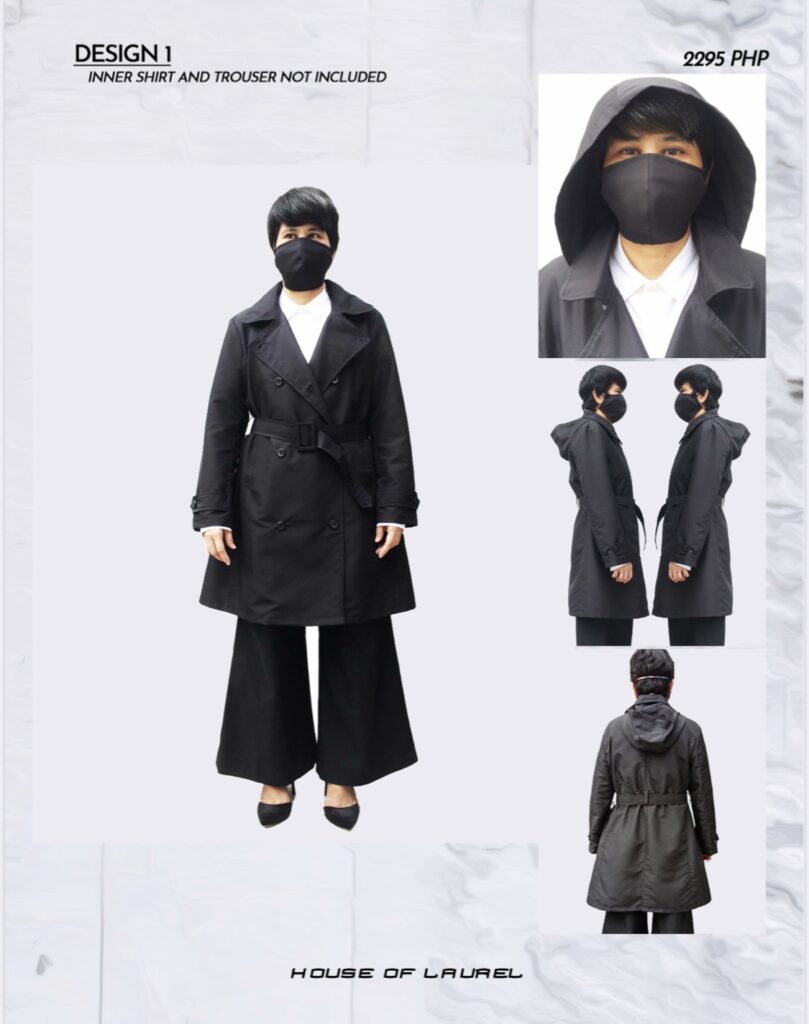
Learning to cut back
From 550 employees, for instance, Rajo Laurel has had to “painfully” cut back, at least, for the time being, on the number of personnel, leaving room for only close to 30 full-time employees that now man his studio and production area in Makati.
“Our business has been severely affected,” he says. “It’s as if, we’re only operating on five percent capacity. So, technically, we are literally on hold.”
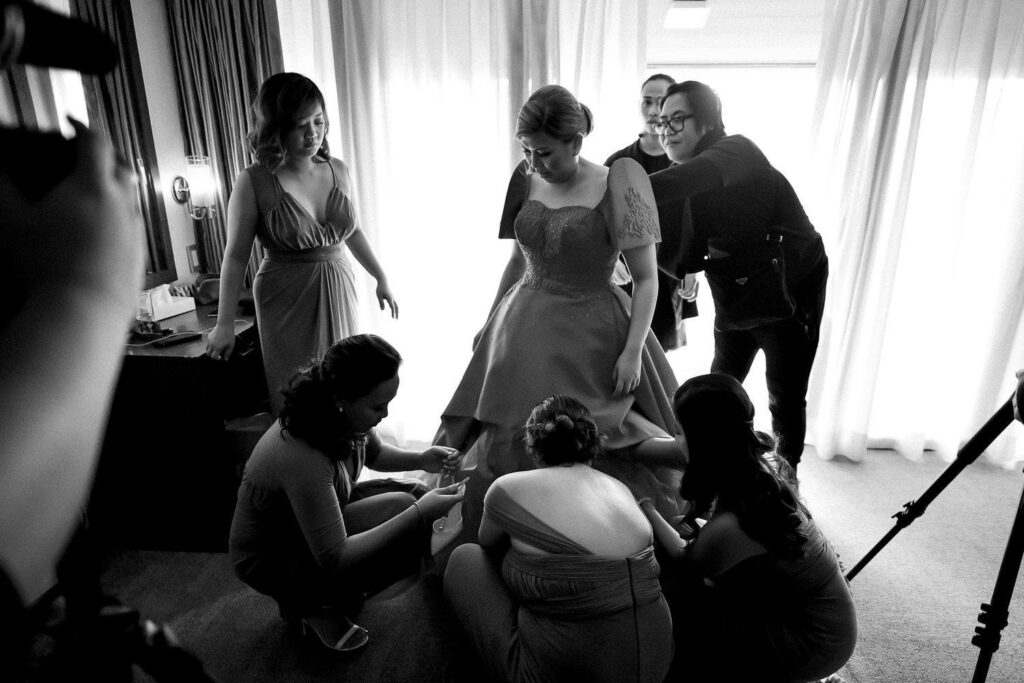
These days, Rajo’s operations are devoted to producing PPEs. Apart from catering to front liners, he has received orders from Doctors Without Borders as well as a number of leading resorts and casinos. He has also received a considerable number of orders for face masks from the Department of Trade.

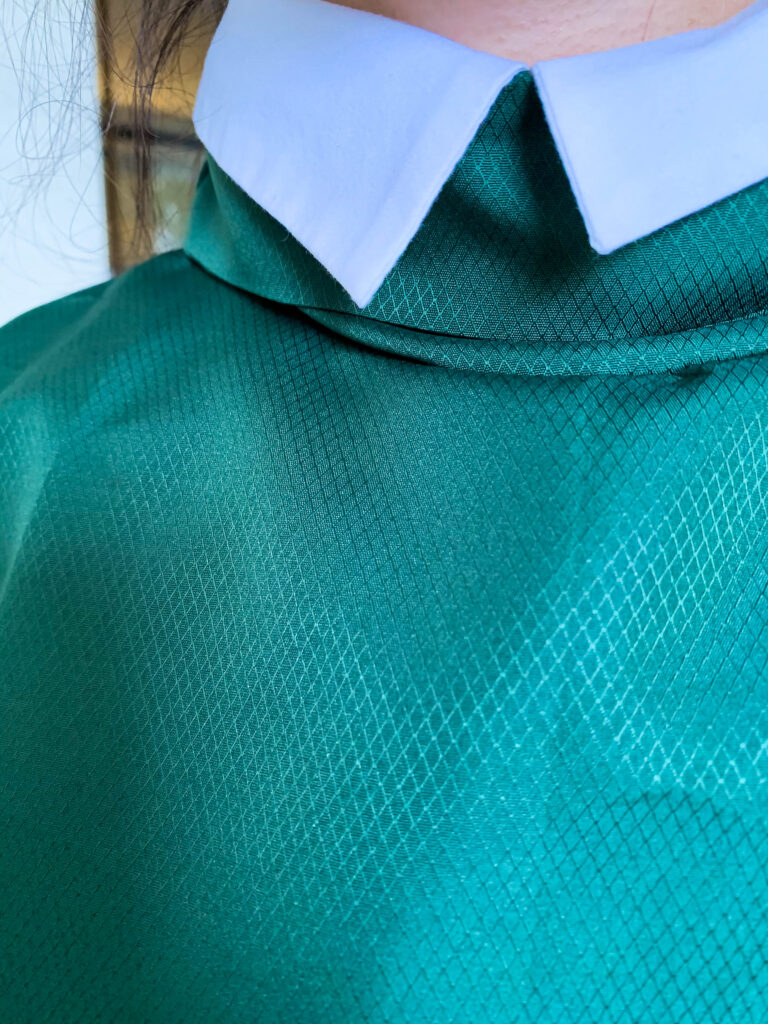
At least, Rajo is open and manned by a skeleton force. As of this writing, Randy Ortiz, another big name in the industry, hasn’t formally reopened his atelier in Quezon City since closing it in mid-March. If it’s any consolation for Randy and his colleagues, all of them still have pending job orders, especially from would-be brides whose altar dates have also been moved because of the pandemic.
“I’ve already come across a number of postponements, but, thank God, no cancellations so far,” says Randy. “Even our clients’ schedules were put on hold. Everyone is on a wait-and-see mode.”
At the height of the lockdown, he continued to tap the services of a number of artisans for embroidery work on his gowns. With the help of a skeleton force, Randy is poised to restart his business anytime soon.
“As mandated by the Labor Department, I had to temporarily retrench a few workers to manage the cost of labor,” he says.
No outright cancellations
Indeed, if there’s one thing they’re all thankful for, none of them have yet to see postponements, as far as made-to-measure bridal gowns are concerned, morph into outright cancellations. But if missed opportunities are any indication, the loss in business, although hard to quantify, is quite staggering.
Michael Leyva, for example, hasn’t only said goodbye to the June wedding season, the second most lucrative period for designers next only to the December holiday season and the first two months of the year when most Filipino weddings are held. Because of its global scope, the health crisis has also led to the cancellation of all local and international fashion shows he had planned to participate in.
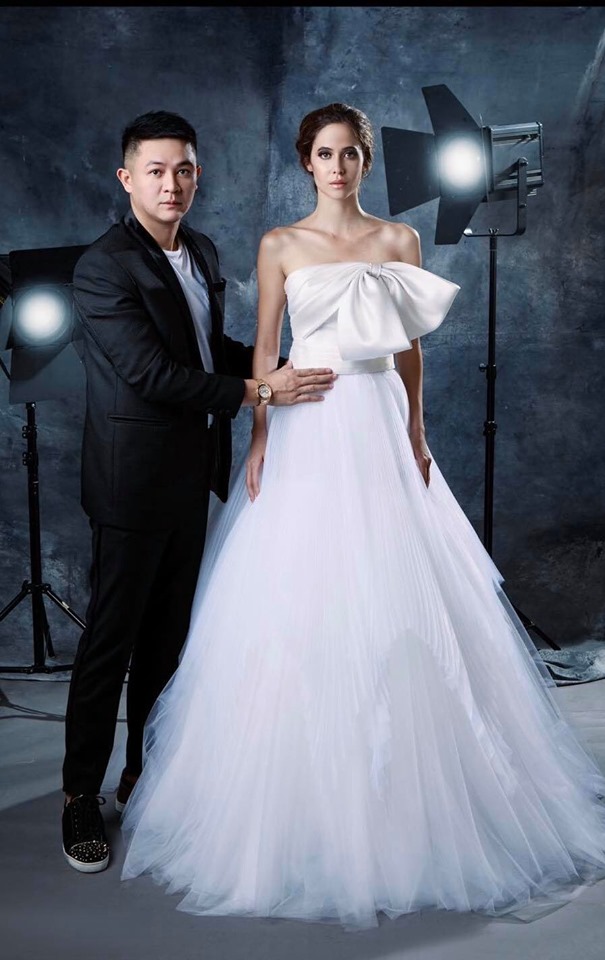
“After we stopped making gowns since early March, my team and I focused our attention on producing PPEs and face masks for front liners,” he says.
Even designers with relatively smaller and presumably more nimble operations like JC Buendia and Dennis Lustico weren’t spared.
“I was at the tail end of the wedding season when it happened,” says Quezon City-based JC, referring to the lockdown. “Two days before, I dressed up my last bride. I was burnt out. Since my next wedding will be in July, I was praying for myself to be able to sleep for the next three days. Well, I got what I wished for and more. We’ve been non-operational since the quarantine started.”
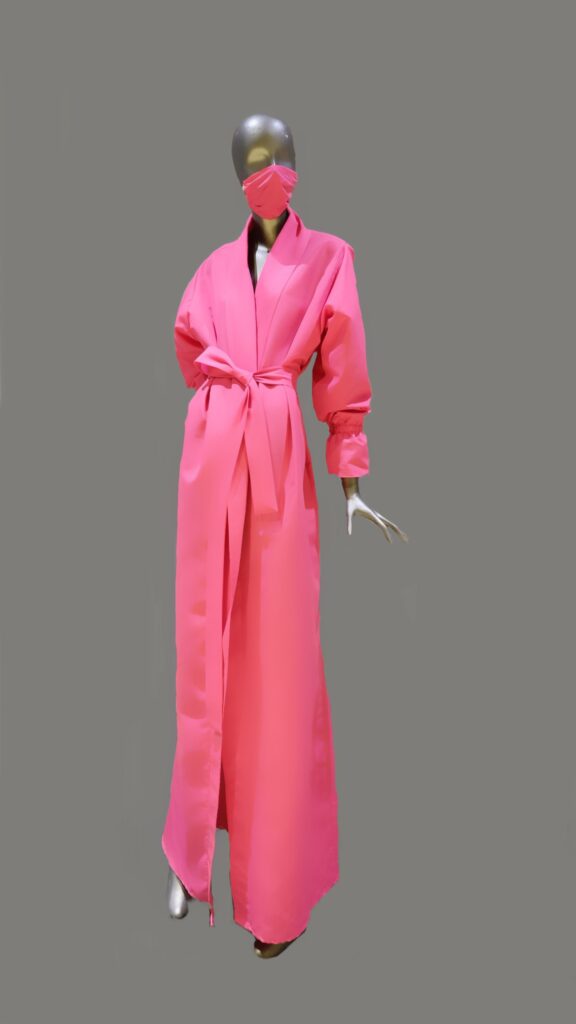
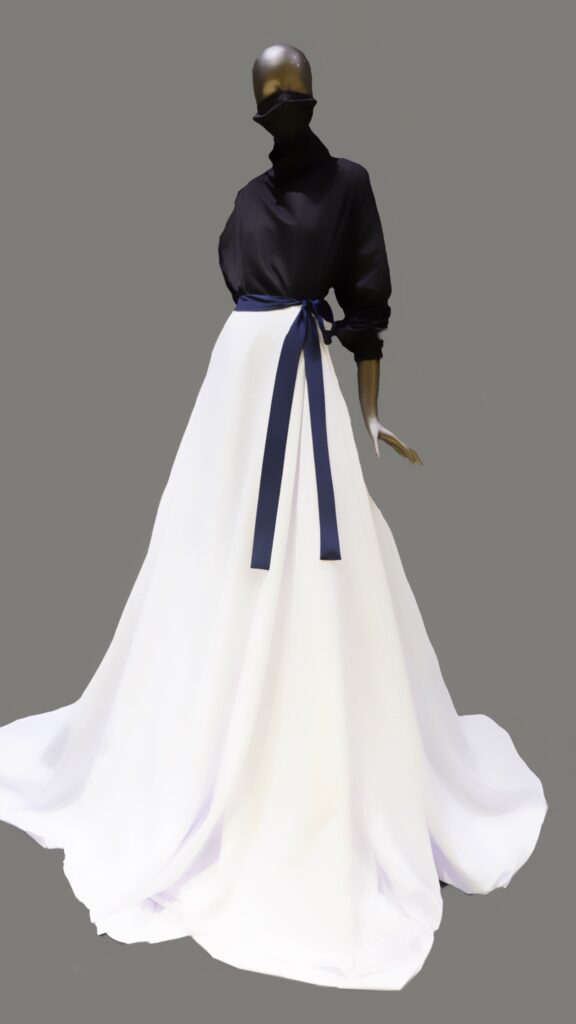
Makati-based Dennis wasn’t only feeling anxious when the lockdown was declared. Since 90 percent of his staff live outside Makati, and with no live-in seamstresses to rely on, he also felt frustrated at not being able to produce and donate a single PPE to help the country’s overburdened front liners.
“Aside from having halted our operations for more than two months, the thought of the pandemic’s likely effects in the coming months occupy me more,” says Dennis, who resumed operations, albeit with just a few key people, last May 18.
As far as Pablo Cabahug is concerned, everything is “on hold” as well. His brides have postponed their weddings, while his uniform clients have also deferred their orders.

“The entire industry has been severely affected by this pandemic,” says Pablo. “The only thing to do is move forward, although slowly, and try to be innovative. This will all pass.”
Noel Crisostomo, perhaps the only designer in this group who relies more on ready-to-wear than couture to bolster the bottom line, is also feeling the pain. Like his colleagues, he was forced to temporarily close Queen Street West, his lifestyle and RTW store in San Juan, which he shares with husband and fellow designer Roland Alzate, in mid March.
“Our sales have been down by 80 and 60 percent, respectively, during the first and second months of the lockdown,” says Noel.
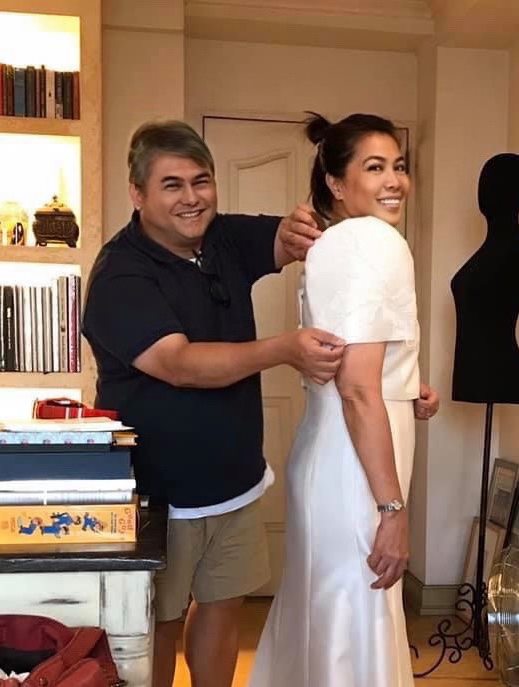
Keeping the team intact
Except for Noel and a single sewer, his production and sales teams aren’t producing anything. Thanks to a very important client who continues to order selected pieces from them, Noel and Roland, who has also managed to sell antiques despite the lockdown, didn’t have to furlough or retrench anyone.
“Since we’re more into RTW, I’m not so affected by cancellations,” says Noel. “As for my made-to-measure pieces, all my clients have shelled out a 50 percent deposit. Because of the good relations we have with them, I believe that they’d be coming back once we resume operations.”
Like Noel, Dennis and JC aren’t about to let go of anyone from their respective teams. JC even had to dip into his savings to help tide over his small team of production people.
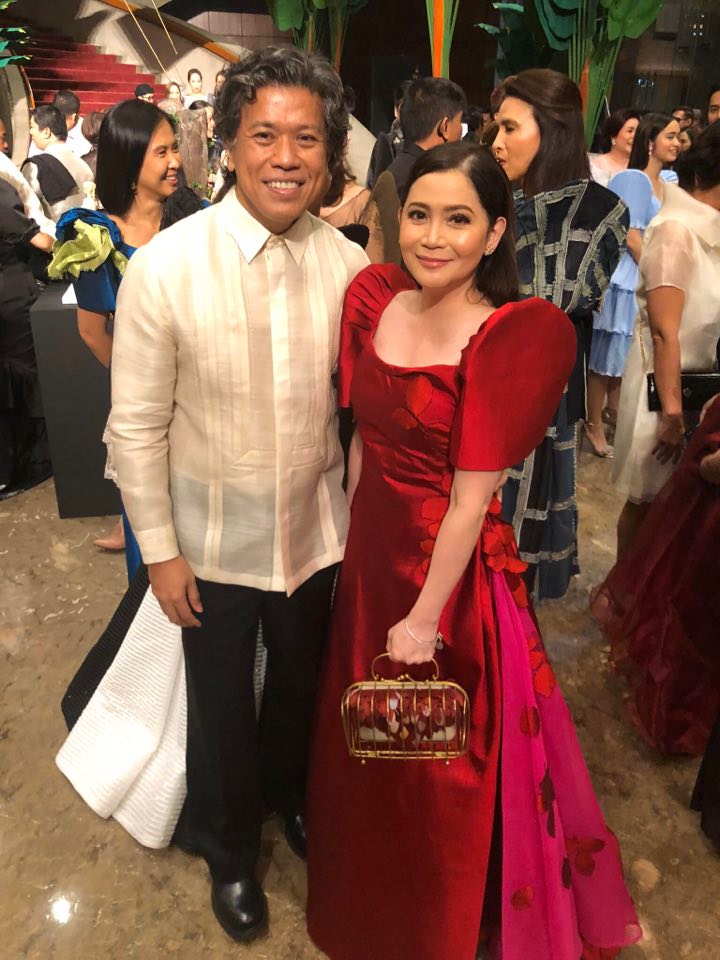
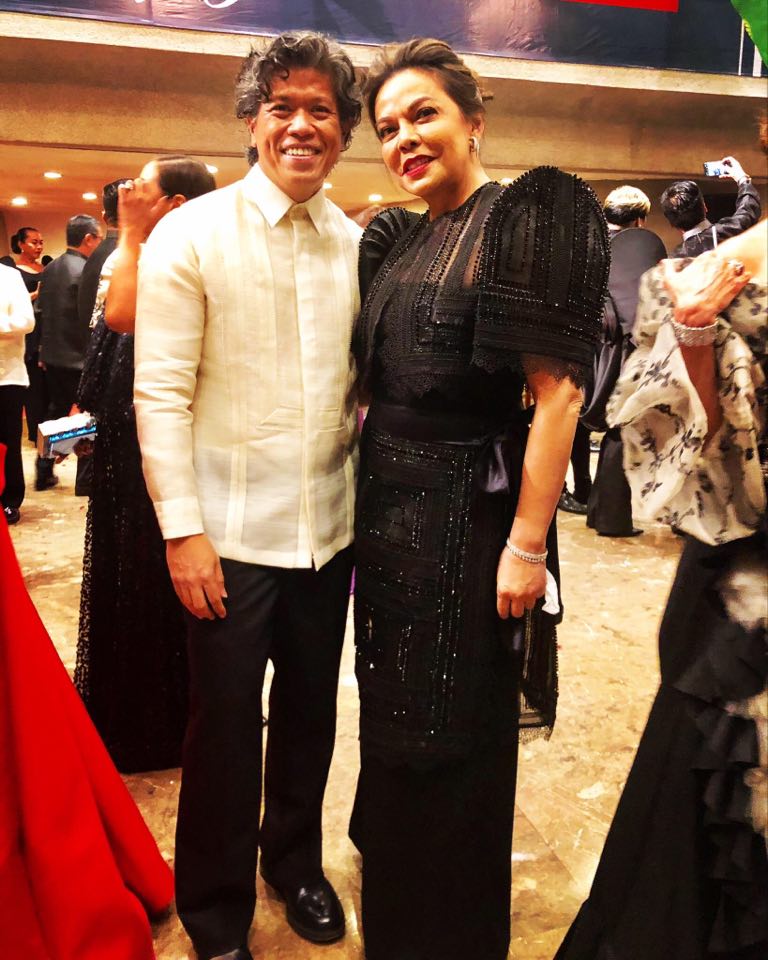
“This pandemic is temporary,” Dennis maintains. “We remain hopeful that the old days will come back. It has always been like that through history—be it war, natural calamity, or man-made disaster.”
Like many of his colleagues, what occupied Dennis most at the start of the lockdown was his staff. Apart from making sure that they have enough money to tide them over, he was concerned for their health and safety.
“I want them to remain healthy, physically and mentally, while on lockdown,” he says. “I want all of them to look forward to going back to work once we restart operations. You can’t reopen a business if you’re hardly ready for it.”
Michael also confesses that he can’t “afford to lose any of my employees.” To make the situation more manageable for everyone, he has allowed them to work on the production of PPEs and face masks on a “scheduled basis.”


“I feel that it would be very inconsiderate of me to totally deprive them of their livelihood at this time,” says Michael.
After donating 10,000 PPE sets and 25,000 face masks to some of the country’s front liners, he, like Rajo, has also been able to secure a number of paid projects from local and international companies, as well as various LGUs, in need of protective wear such as Wyeth Nutrition and Frontrow Philippines. Call the development good karma.
Apprehensive yet hopeful
Now that most businesses, apart from those deemed essential, are starting to slowly spring back to life, all of them are bracing themselves for a slow start fraught with uncertainty and a certain degree of danger. At the same time though, they remain hopeful that the worse will soon be over.
“We have to embrace change while planning everything carefully,” says Michael, who recently launched a capsule collection of smart RTW separates made of lightweight, water-repellent and washable fabrics, which he dubs as “non-medical PPE,” under the brand name ML (message him through Instagram—@MLbyMichaelLeyva).
“They can be worn comfortably outdoors by women who still want to look and feel fashionable while being protected in this time of new normal,” says Michael.
For his part, Rajo views this period of transition as a time of “relearning” that requires creative businesspersons like him to once more think out of the box while utilizing available tools at their disposal.
“Communicating our story on a digital platform is really the goal,” he says, referring to his recent virtual fashion show. “How to do this with much thought and authenticity was what I wanted to achieve. I won’t lie. It was very difficult. But nothing good comes without hardship.”
He also recently launched the House of Laurel’s “Contemporary Armor” collection of protective wear made of water-repellant fabric for non-medical people. According to his sisters, who tested the prototype, they’re cool and breathable enough to be worn outdoors (contact House of Laurel at https://bit.ly/HOLPPE).
“The Contemporary Armor for women has been doing quite well,” Rajo, who’s currently busy testing and fine-tuning a similar version for men, shares. “Priced lower than my usual items, we’ve so far sold 10,000 units.”
Pablo also recently launched his “Vital” collection of bright, wearable protective wear made of Diamond Ripstop fabric and Ibex. He swears it’s lighter, more breathable than the usual microfiber and therefore wearable alone or over regular garments even in the country’s often humid weather. (Email him or call him at contact@pablocabahug.com or call at 0917-8008819)
“I got the idea when a dermatologist-client approached me, telling me that she needed a PPE uniform sewn for her,” says Pablo. “At the same time, she wanted something practical and effective to shield her from particulate matter. I also asked another doctor to review and approve the design I made. Now, I’ve been getting orders not only from dermatologists, but also from ophthalmologists and dentists.”
JC, who confesses to experiencing palpitations just thinking about what the future holds, reveals that he and a number of designers as well as hairstylists have formed a group that has gone online to sell their products. At the same time, they’re also launching a “Buy Filipino” campaign.
“Selling RTW is new for me since I’ve always been into made-to-measure,” he adds.
They’re also banking on the innate need of people, especially women, to still look their best even during difficult times. And once the world is able to defeat the virus, people’s pent-up need to celebrate and be seen wrapped in fabulous clothes, like what Christian Dior took inspiration from when he introduced the “New Look” soon after the war, is likely to explode.
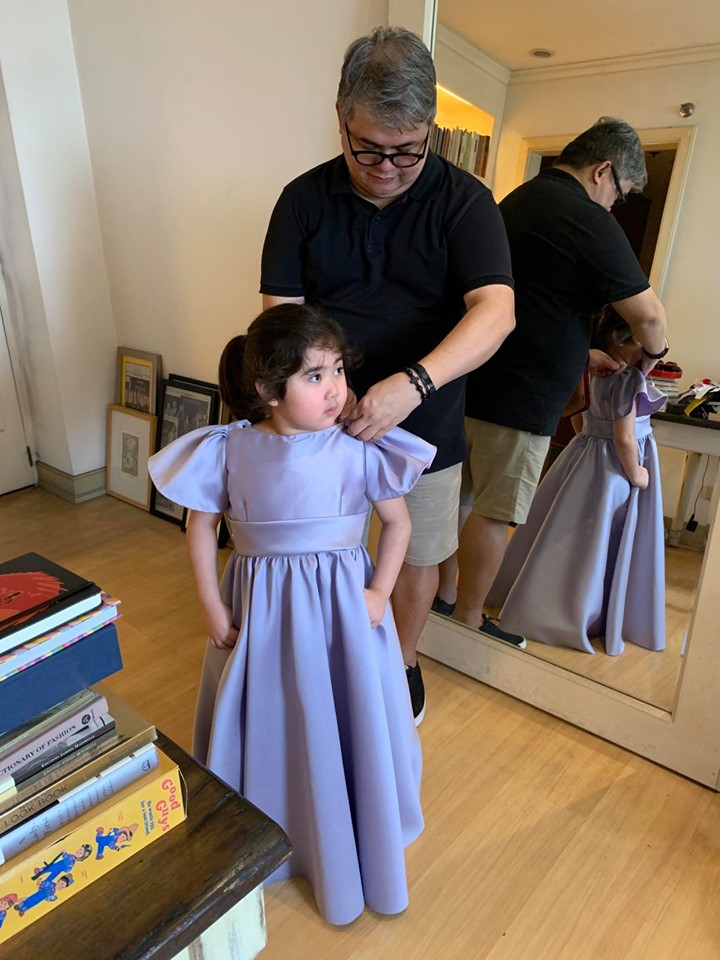
With such opportunities, of course, come new challenges. With no vaccine and a more effective treatment protocol to deal with COVID-19 in sight, the challenge for now, says Noel, is how to get existing clients to feel safe enough to come to the store to buy, order and do fittings.
Despite feeling buoyed, Randy is very much aware of the need to adhere to existing health protocols as well as rethink the entire business—from receiving and dealing with clients, to the layout of the shop down to the production area, in keeping with social distancing requirements. And the implementation of such necessary measures to stay in business would mean only one thing: more expenses.
There’s no other way to go about it, says JC, but for designers like him to further tighten their belts. And to do so, he jokes, he and his colleagues would need more than wide belts while they all wait to exhale. At the rate things are going, they’d need to slip into the tightest corsets as well.

